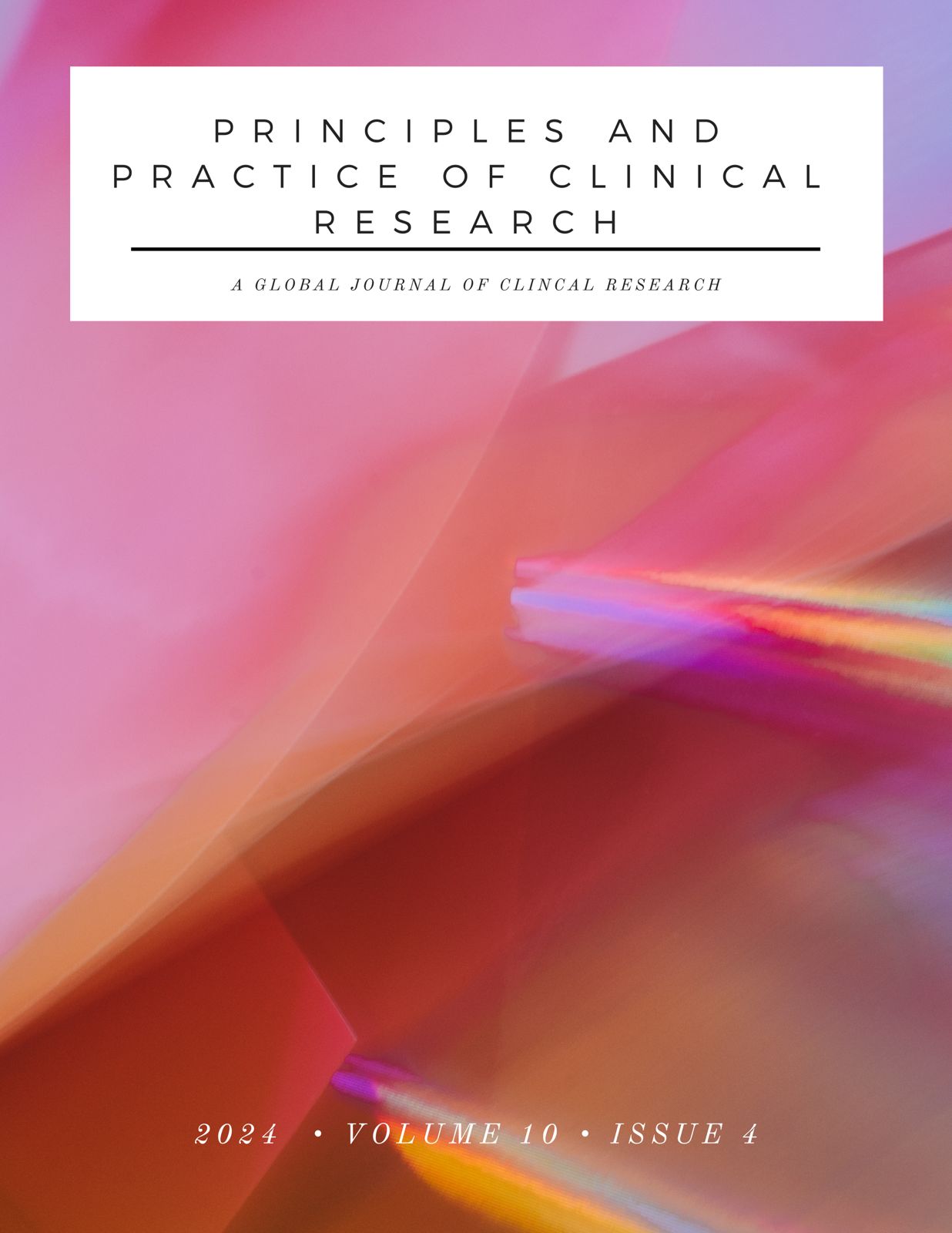Maham Safarat Kirmani
Principles and Practice of Clinical Research (PPCR), Harvard T.H. Chan School of Public Health, Boston, MA, USA
Carlos Alberto Narvaez Gaitán
Principles and Practice of Clinical Research (PPCR), Harvard T.H. Chan School of Public Health, Boston, MA, USA
Maria-Antonia Pelaez Lopez
Principles and Practice of Clinical Research (PPCR), Harvard T.H. Chan School of Public Health, Boston, MA, USA
Ana Gabriela Claros Ospina
Principles and Practice of Clinical Research (PPCR), Harvard T.H. Chan School of Public Health, Boston, MA, USA
Danielle Magalhães
Principles and Practice of Clinical Research (PPCR), Harvard T.H. Chan School of Public Health, Boston, MA, USA
Tejasvi Dwivedi
Principles and Practice of Clinical Research (PPCR), Harvard T.H. Chan School of Public Health, Boston, MA, USA
Jonathan Isai Cazares Gonzalez
Principles and Practice of Clinical Research (PPCR), Harvard T.H. Chan School of Public Health, Boston, MA, USA
Julia Cristhina Monteiro Klock
Principles and Practice of Clinical Research (PPCR), Harvard T.H. Chan School of Public Health, Boston, MA, USA
Maria Victoria Wolf
Principles and Practice of Clinical Research (PPCR), Harvard T.H. Chan School of Public Health, Boston, MA, USA
Belissa Zaiek
Principles and Practice of Clinical Research (PPCR), Harvard T.H. Chan School of Public Health, Boston, MA, USA
Fátima Lucia Nuñez Sanz
Principles and Practice of Clinical Research (PPCR), Harvard T.H. Chan School of Public Health, Boston, MA, USA
Radja Messai Badji
Principles and Practice of Clinical Research (PPCR), Harvard T.H. Chan School of Public Health, Boston, MA, USA
Renata Drummond
Principles and Practice of Clinical Research (PPCR), Harvard T.H. Chan School of Public Health, Boston, MA, USA
Sumia Ahmed
Principles and Practice of Clinical Research (PPCR), Harvard T.H. Chan School of Public Health, Boston, MA, USA
Raphael Gracindo
Principles and Practice of Clinical Research (PPCR), Harvard T.H. Chan School of Public Health, Boston, MA, USA
Arthur Lopes
Principles and Practice of Clinical Research (PPCR), Harvard T.H. Chan School of Public Health, Boston, MA, USA
Maria Camila Ayala Peña
Principles and Practice of Clinical Research (PPCR), Harvard T.H. Chan School of Public Health, Boston, MA, USA
Julia Collete de Souza
Principles and Practice of Clinical Research (PPCR), Harvard T.H. Chan School of Public Health, Boston, MA, USA
Lionete Filha
Principles and Practice of Clinical Research (PPCR), Harvard T.H. Chan School of Public Health, Boston, MA, USA
Monserrat Guraieb-Trueba
Principles and Practice of Clinical Research (PPCR), Harvard T.H. Chan School of Public Health, Boston, MA, USA
Arthur Segurado
Principles and Practice of Clinical Research (PPCR), Harvard T.H. Chan School of Public Health – ECPE – PPCR Program
Elisa Gabrielli
Principles and Practice of Clinical Research (PPCR), Harvard T.H. Chan School of Public Health, Boston, MA, USA
Joao Ribeiro
Principles and Practice of Clinical Research (PPCR), Harvard T.H. Chan School of Public Health, Boston, MA, USA
Marco A. López Cáceres
Principles and Practice of Clinical Research (PPCR), Harvard T.H. Chan School of Public Health, Boston, MA, USA
Bruno Henrique Schuta Bodanese
Principles and Practice of Clinical Research (PPCR), Harvard T.H. Chan School of Public Health, Boston, MA, USA
Miguel Urina-Triana
Principles and Practice of Clinical Research (PPCR), Harvard T.H. Chan School of Public Health, Boston, MA, USA; Faculty of Health Sciences, Simon Bolivar University, Barranquilla, Colombia, 080002
Abstract
Introduction: This study examines whether recreational physical activity can reduce NSAID use among adults. While NSAIDs effectively manage pain, they carry risks like gastrointestinal and cardiovascular side effects. Exercise, known for its anti-inflammatory effects, offers a non-pharmacological alternative. Physical activity reduces inflammation through anti-inflammatory cytokines, and lower visceral fat, and immune support, suggesting it may reduce NSAID need.
Methods: A cross-sectional analysis used 2017-2018 NHANES data, representing the U.S. population, including 5,145 adults with complete NSAID use and recreational physical activity data. Statistical analysis with STATA 18.5 applied univariate and logistic regression modeling to assess associations between recreational exercise (moderate, vigorous, or both) and NSAID use. Confounders, including age, gender, BMI, arthritis, and trouble sleeping, were adjusted in the final model.
Key Findings: Participants engaging in both moderate and vigorous exercise had significantly lower odds of NSAID use (OR 0.50, 95% CI: 0.32, 0.78). Conversely, arthritis (OR 3.89, 95% CI: 2.83, 5.34) and at least one comorbidity (OR 1.75, 95% CI: 1.15, 2.65) were linked to higher NSAID use
Implications and Conclusion: This study highlights regular moderate and vigorous exercise as a viable non-pharmacological strategy to reduce NSAID use and associated health risks. Recognizing factors like arthritis and sleep quality that influence NSAID use helps improve pain management strategies, with exercise as a beneficial addition. Further research should explore exercise types and lasting effects on NSAID reduction.

